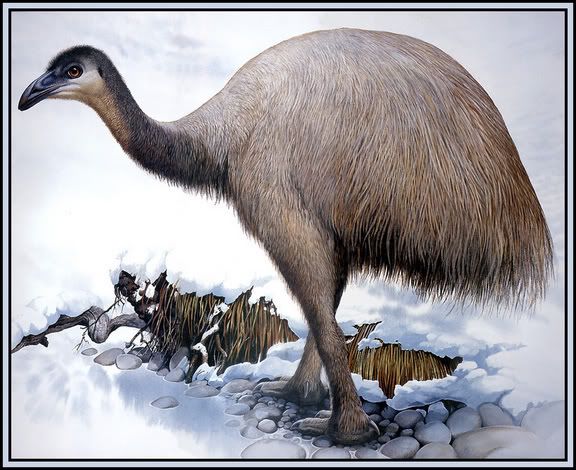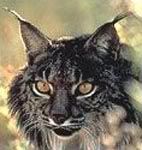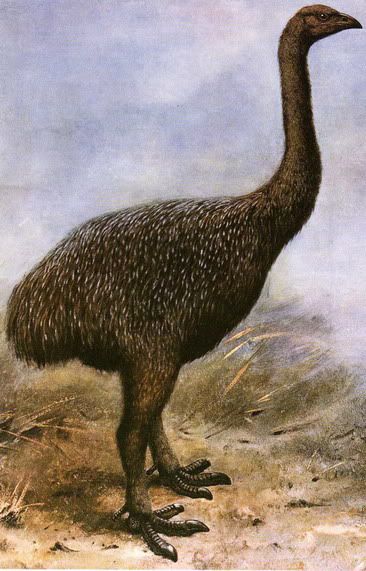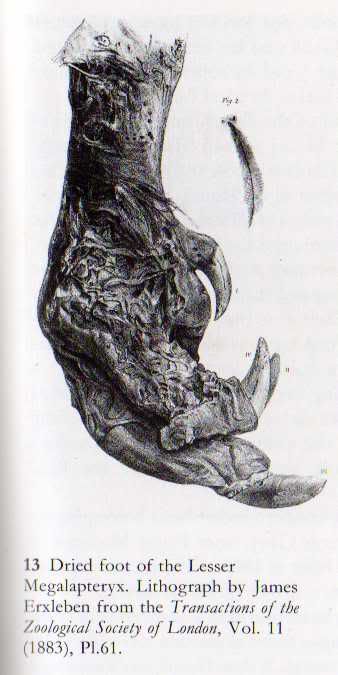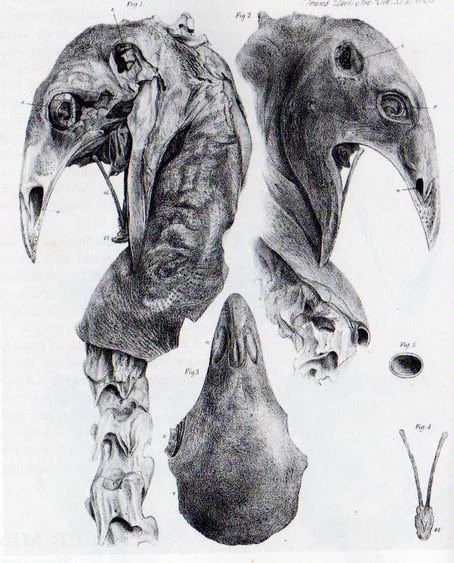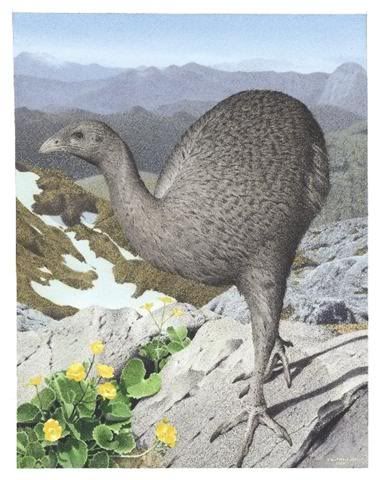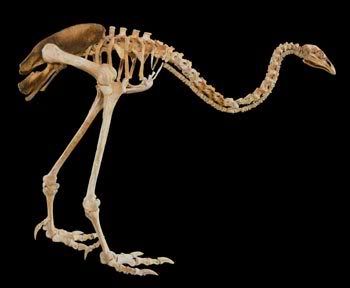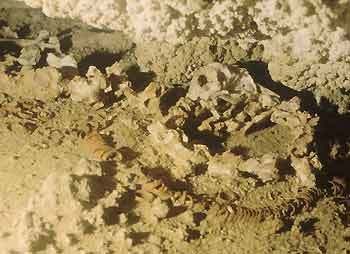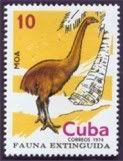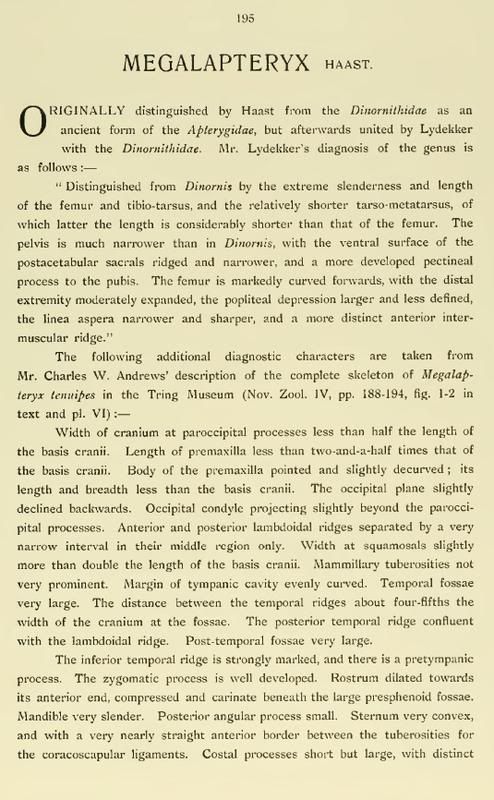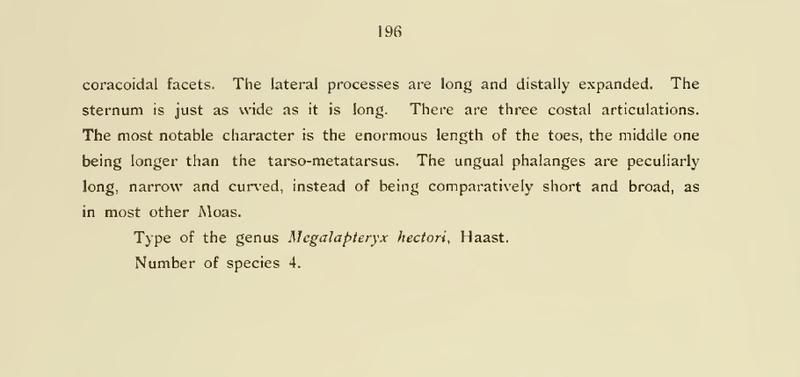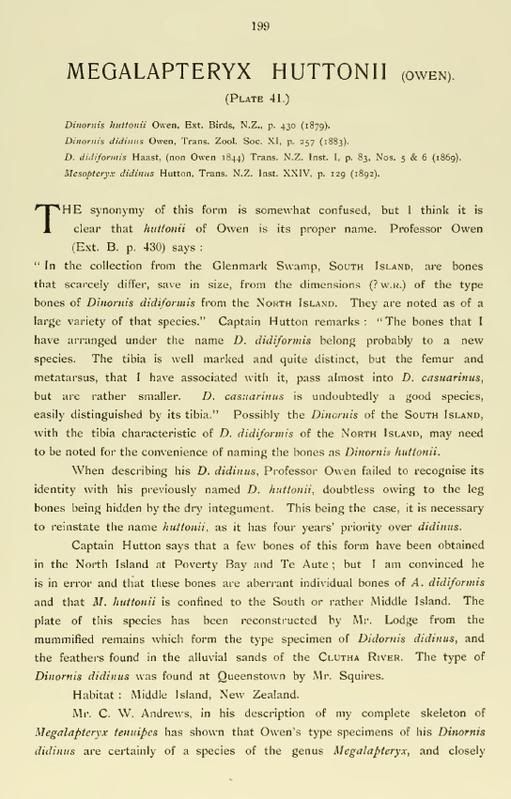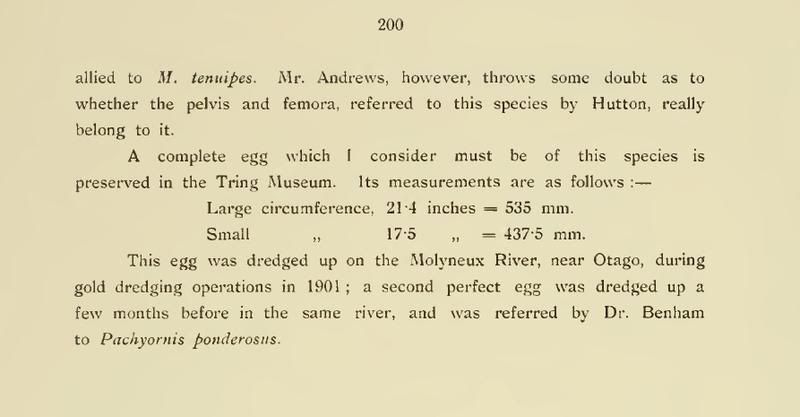Post by Melanie on Nov 6, 2005 2:03:54 GMT
The Upland Moa was around 1.3 metres tall and weighing perhaps 25 kilos. It was one of the smallest of the moa species, the upland counterpart to the Little Bush Moa. As its name implies, it lived in the higher, cooler parts of the country, browsing in the high country forests, and in summer on the shrubs and herbs of the subalpine zone. As far as we know, the Upland Moa was unique to the South Island. From a mummified find, a foot, we know that, unlike other Moa, this one had feathers right down to its ankle — probably an adaptation to its cold home.
In 1878, H.L. Squires obtained near Queenstown the remains of a Moa with the skin still attached to the head and feet. Part of this was fowarded to the British Museum a few years afterwards and was the basis of the species Dinornis didinus of Owen. Two nearly complete skeletons are known, one found at Pokororo and now in the British Museum, and the other found near Cromwell and now preserved in the Dominion Museum, Wellington.
This species evidently ranged from near sea level to high up on the mountains. In 1949 its remains were found in caves above Lake Te Anau at an altitude of 3000 feet, associated with the bones of Takahe and Kakapo and with Maori artifacts.
Worthy and Holdaway postulate that because the Upland Moa, together with the Coastal Moa, the Eastern Moa and the Stout–legged Moa, had the smallest olfactory chambers, they had the greatest vocal abilities. They perhaps needed loud calls in their mixed dense grassland, shrubland and forest environments. Males may have had lek behavior or even been noctural. We don’t know.
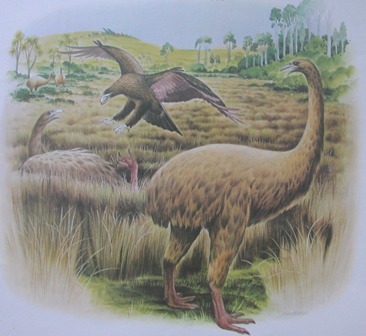

In 1878, H.L. Squires obtained near Queenstown the remains of a Moa with the skin still attached to the head and feet. Part of this was fowarded to the British Museum a few years afterwards and was the basis of the species Dinornis didinus of Owen. Two nearly complete skeletons are known, one found at Pokororo and now in the British Museum, and the other found near Cromwell and now preserved in the Dominion Museum, Wellington.
This species evidently ranged from near sea level to high up on the mountains. In 1949 its remains were found in caves above Lake Te Anau at an altitude of 3000 feet, associated with the bones of Takahe and Kakapo and with Maori artifacts.
Worthy and Holdaway postulate that because the Upland Moa, together with the Coastal Moa, the Eastern Moa and the Stout–legged Moa, had the smallest olfactory chambers, they had the greatest vocal abilities. They perhaps needed loud calls in their mixed dense grassland, shrubland and forest environments. Males may have had lek behavior or even been noctural. We don’t know.





